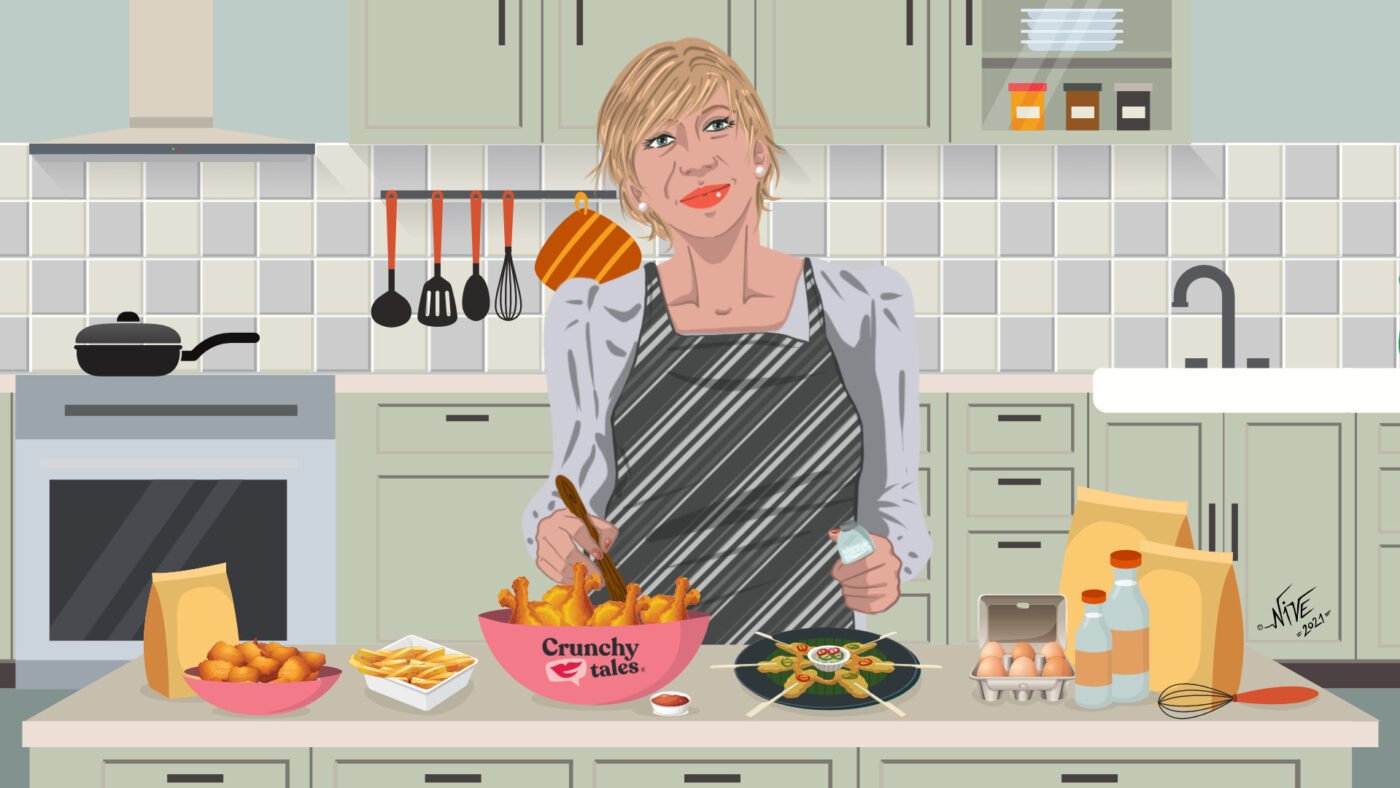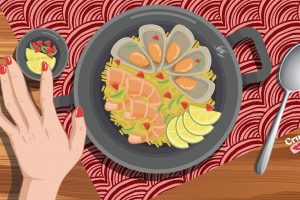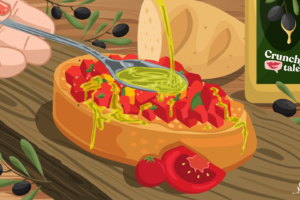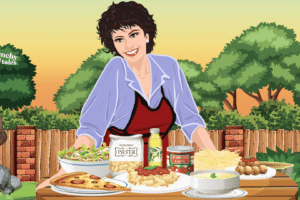Golden Crispy: The Secrets Of Perfect Frying Revealed
You could say that I am frying in the face of the convention this month, with everyone seemingly tuned into Veganuary and the unquestionable virtues of sensible dieting and healthy eating in this New Year. But this is not a new year like any other we have ever known, and with everyone feeling thoroughly fed up, this might not be the time for such gastronomic restraint. I am not advocating that we should all switch to eating fried food at every meal, far from it, but I do think that an occasional treat might be a nice way to cheer ourselves up “in these strange and mournful days”, to paraphrase Paul Simon.
When I think about this kind of food, I am reminded of long summer days in Naples, wandering around the back streets of that beautiful city where deep-frying is really respected as a cooking method and the results are unimaginably crisp, light and seductive. As I strolled, I could listen to the sounds of people frying on their tiny balconies, chatting to their neighbours across the narrow street or on the adjoining balcony, their words rising above the sizzle of their pan, while the delicious aroma of perfectly fried fish, vegetables and meat rose up into the air and drifted down to me. It seemed to me such a sensible thing they did: taking this task outdoors so that the inevitable spatter and smell would not invade their homes.
To successfully achieve great results, there are a few rules you must follow with real diligence. The idea is to make food crispy and delicious on the outside while ensuring it is still tender and juicy on the inside.
Safety
When done properly, deep-frying is a clean, fast way to fry foods, but it comes with a safety warning for obvious reasons, as you are dealing with large amounts of boiling hot oil. The best way to do it is to use a deep fryer, although it is possible to deep fry very successfully in a large, sturdy saucepan. Make sure you are comfortable with this cooking method before you begin and have everything carefully set up before you start to heat up the oil. Never overfill the vessel and if you are using a deep fryer, be sure you know and understand its specific safety guidelines. Do not leave the fryer or pan unattended while it’s on, and always make sure you are frying in something robust, with a well-fitting lid and on a clear, steady surface with no possible wobble that could lead to spillage. Turn the handles of your pan away from the front of the cooker to avoid accidentally knocking the pan off the hob. Always keep the kitchen a child-free zone while deep-frying. If you do cause a fire, never try and put it out with water but put a lid on the pan if possible.
Don’t fry anything wet
Oil and water just don’t mix, and when the oil is hot this becomes even truer. Excess water will lead to horrible splattering. Make sure you always blot fresh foods first with a paper towel, and if you are dipping in batter, make sure you shake off any excess before dropping the food into the oil and that whatever you have battered was dry before you dipped.
The temperature
Just a few degrees of temperature will make the difference between a nasty grease-soaked result and something that is delectably crisp and golden. If you are using a deep fryer, you can keep an eye on the temperature throughout the cooking process by checking the dial, so you can pause and wait for it to come back up to temperature if you need to in between batches. If you don’t have a deep fryer, do use a food thermometer and check it regularly. Heat the oil to 160C for low, 180C for moderate and 190C for high. The temperature for frying varies according to the size and density of whatever you are frying. The larger or denser the item, the cooler the oil should be as you will be cooking it in the oil for longer.
Don’t overcrowd
One of the most common mistakes people make is to just put too many things into the fryer or pan at once. This will mean things won’t come out crispy and will take much longer to cook than necessary. You should ideally fry a single layer of food for each batch but always go for less rather than more if in doubt.
The cooking fat
Always use oil with a high smoke point. This refers to the temperature oils that can be heated to before they smoke and burn. Saturated and monounsaturated oils are considered the most stable for frying. Oils that are rich in polyphenols or antioxidants like olive oil and rapeseed oil are also better because they become less damaged at high temperatures.
You must always dispose of the oil safely after cooking. Leave it in the fryer or pan somewhere safe and out of the way to cool down completely. Once cold, pour it into a jug, and then back into its original bottle. If you pour oil down the sink, you’ll probably end up with a blocked pipe.
Drain away the excess oil
Once cooked, be sure to remove the item with a slotted spoon and drain it thoroughly on kitchen paper before serving. When the draining paper gets oily, throw it away and replace with fresh clean sheets.
Whether you are going to treat yourself to a batch of fluffy homemade doughnuts, homemade chips, or proper fried chicken in a buttermilk batter; this could be a wonderful treat, a guilty pleasure perhaps, in the midst of so much misery. And in the meantime, as far as I’m concerned, I’ll be enjoying my Fritto Misto while I dream about Naples, in the sure knowledge and hope that I will be there again soon.
****
Good To Know: The Most Common Styles Of Frying
Sautéing: best for small, chopped or diced ingredients (like mushrooms). It is a basic cooking method that forms the basis for many dishes (often soups and stews) by browning and enhancing the flavour of ingredients. The technique relies on the heat of the pan to cook ingredients both concurrently and very quickly. It’s all about keeping the ingredients moving around in the pan, using coconut oil or a high-quality extra virgin olive oil.
Deep Frying: the best way to achieve this is by ensuring the temperature remains high. Vegetable oil or sunflower oil are great for deep frying as they have a relatively high smoke point. Best for anything that is breaded or battered (like fritters and fish cakes). You have to fill up the pan with enough oil to submerge the bottom of whatever you’re cooking. It should produce a golden-brown crispness to the exterior.
Stir-Frying: it is a cooking technique that basically involves throwing in a heap of ingredients together in a wok and frying them in very hot oil while stirring constantly. Only a small amount of oil is required for a stir-fry, which makes it a healthier frying option. The perfect way to get rid of a few leftovers.
Like this article? Sign up to our newsletter to get more articles like this delivered straight to your inbox.






